Quit Dimpling Those Converters
This all started with my looking at multiple converter failures caused by the converter bolts damaging the backs on Toyota A245E/A246E transmissions used with the 1.8-liter engine. We also see this in other Toyota applications, maybe more so than with other vehicle manufacturers.
My intentions were to order some factory bolts to get the proper dimensions and possibly send these reman units out with new bolts, either OE or an economical replacement bolt. I was hoping this would eliminate any confusion for the R&R technician as to which bolts were the proper ones to go into the converter, hence eliminating unwanted warranty repairs.
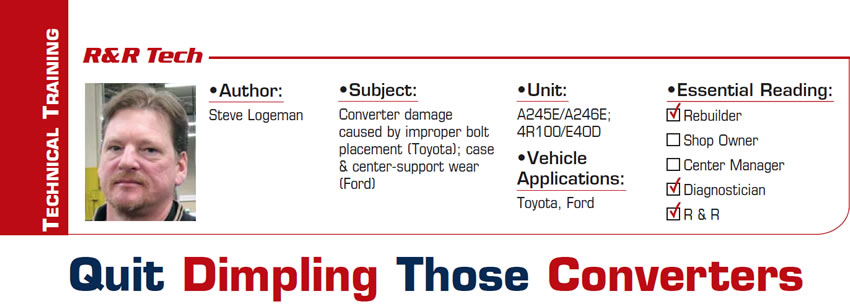
Clearing up Some Toyota Solenoid Confusion
Different terminology for the same part has been an ongoing problem in the transmission industry ever since I can remember. When I was learning to rebuild transmissions, Chrysler Torqueflite and Ford C-4 transmissions were always in the shop. These two transmissions had the same power flow, but all the internal components had different names.
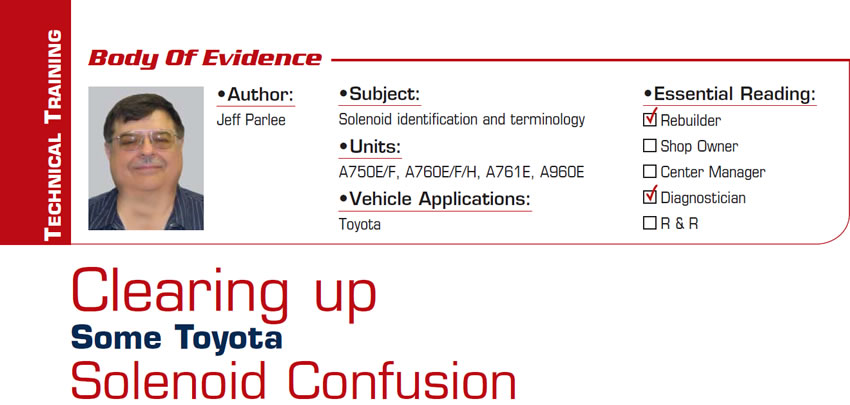
Toyota U341E/F
In the Import section of ATSG’s “Shifting Great in 2008” training seminar, one subject that was handled in the Toyota U341E/F segment of the seminar was the elusive code P0770. What makes this code so elusive is that it points to a fault for shift solenoid E. The technician tries to determine which is shift solenoid E and cannot. Nor can the technician determine whether the code indicates an electrical problem or a mechanical one.
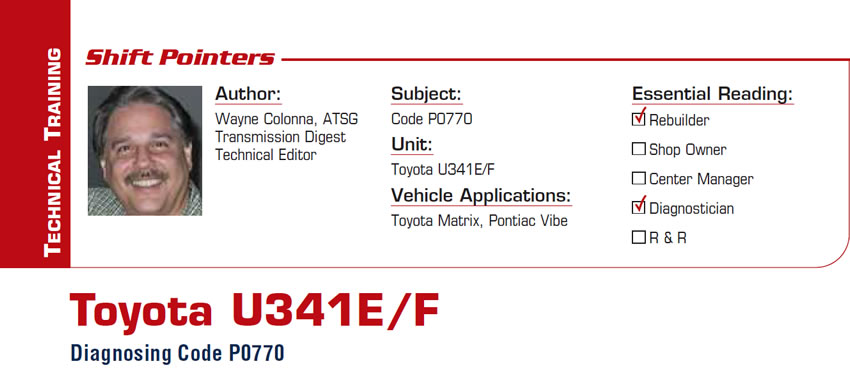
Cynically Clever
One recent example involved a Toyota Camry with the A140-E four-speed transaxle and an L4 engine. Although this transmission was used in model years 1983 through 2001, we rarely receive calls on it – yet in one week I had three calls. One problem was rapid or stacked upshifts with no kick-down shifts. This problem is typically caused by restricted solenoids. The second call was a harsh engagement into reverse. This is typically caused by the use of flat frictions to replace the waved ones originally installed (see Shift Pointers on page XX of this issue).
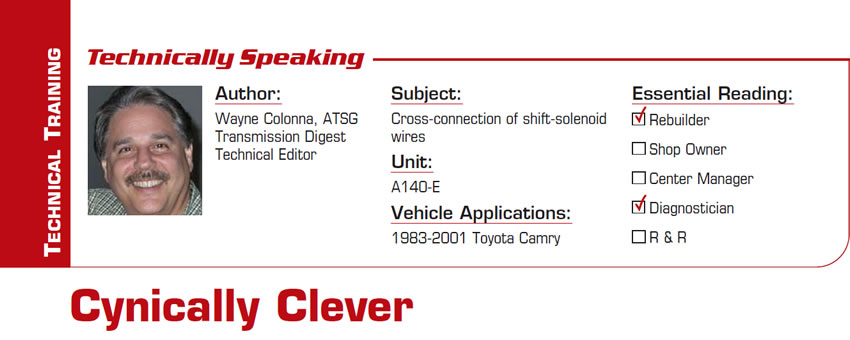
V-8 Toyota Tundra
I am sure by now that most shops out there have run into the pesky P0770 “Solenoid E Fault,” on some type of Toyota or Lexus vehicle, that has given you the runaround. ATSG senior technical consultant Jim Dial and I have spoken about this on numerous occasions, since it is a very common problem on our tech line. Jim did a bit of investigating, and this is what he discovered.
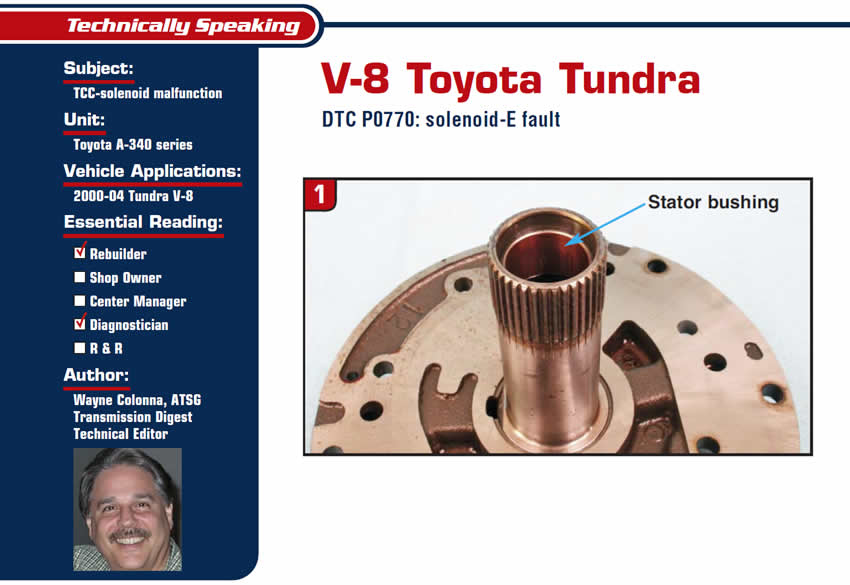
Blame the Torque Converter, Part 2
Last month, in Part I of “Blame the Torque Converter,” a 2001 Volkswagen Jetta and a 2002 Toyota Tundra were both thought to have faulty torque converters. Both vehicles had TCC-related trouble codes (the Jetta had a 740 code and the Tundra had a 770 code).
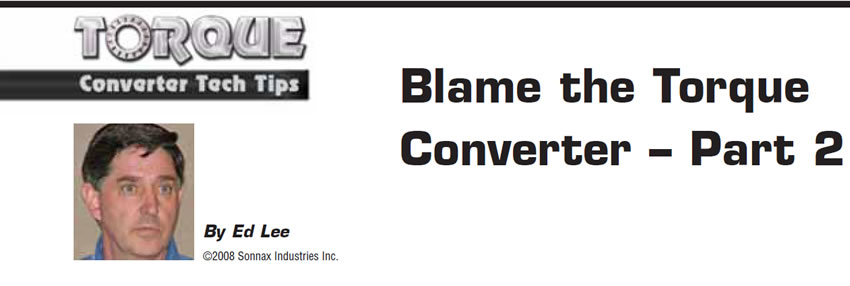
Blame the Torque Converter – Part 1
Society often influences us to try to blame others for our problems. From an early age we try to place blame with friends or siblings. Our training usually continues into our school age, when the guilty person is always “the other guy.” It seems only natural for this mindset to continue into the workplace. This is especially true if your workplace happens to be with the automatic-transmission industry. The mysterious inside of a sealed torque converter is easily substituted for the “big dumb kid” in the back of the classroom. The following are examples of a torque converter being unjustly blamed for a transmission problem.
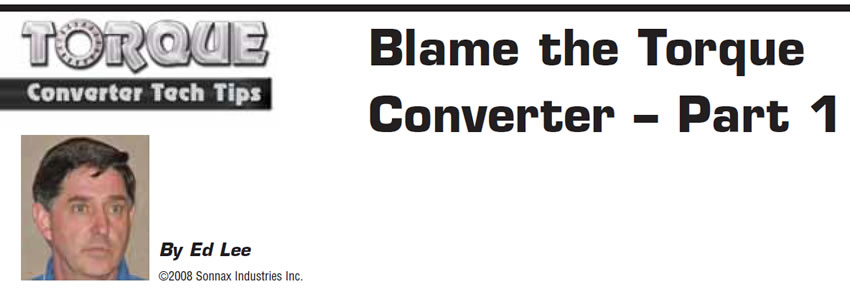
Toyota/Lexus U140/240
In past articles and bulletins we have talked about functions of the torque-converter-clutch (TCC) solenoid on the 4L30-E family and how on BMW and 2000-up Isuzu models this solenoid is responsible for TCC application and a reverse-inhibit solenoid. The U140/240 series has “one-upped” that, as we are going to find out in the following illustrations.
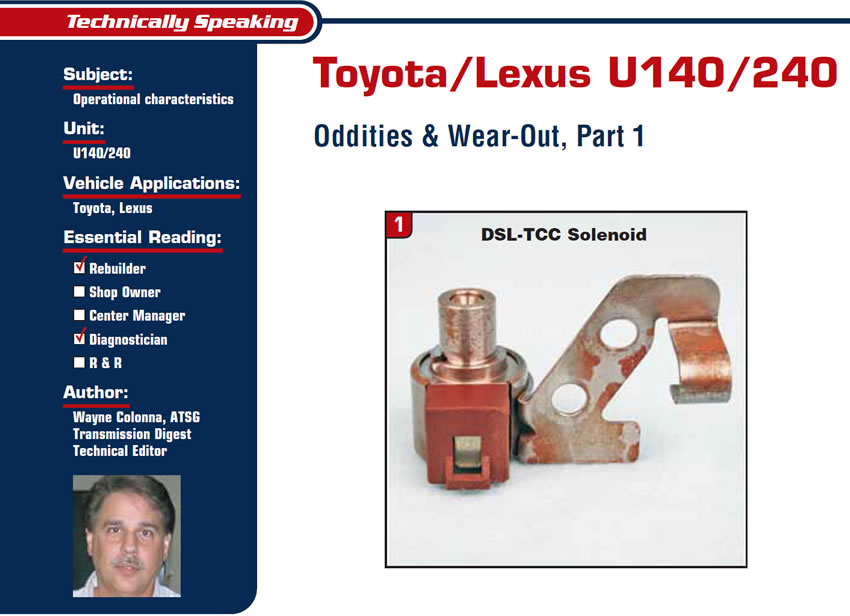
When in Doubt, Reset
If you find yourself faced with a1998-up Acura RX300 or a 2000-up Toyota RAV4 with shift-quality concerns, here are a few things you should know before you waste your time chasing wild geese.
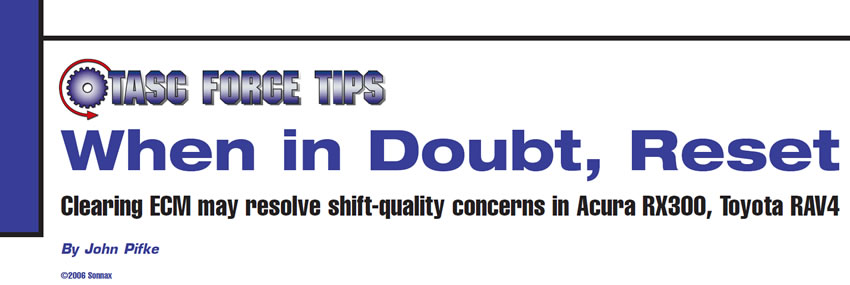
Problems With Metric Cooler-Line Fittings
Few things slow down an R&R job like frozen cooler-line fittings. The metric cooler-line fittings used in Isuzu 4L30 applications and Toyota trucks with A340/30-40LE (see Figure 1) are frustrating enough to make you want to reach for the tubing cutter and start cutting rather than struggle with stubborn lines.

